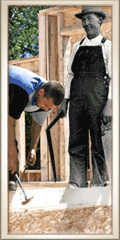|
|||
|
Now Over 25,000 Categorized Links! Family Census Data Directory |
|
|||
|
Now Over 25,000 Categorized Links! Family Census Data Directory |
|
|

|
1880 CensusGo to available databases for 1880The 1880 census was begun on 1 June 1880. The enumeration was to be completed within thirty days, or two weeks for communities with populations of 10,000 or more. Questions Asked in the 1880 Census For each person in every household, the census asked name; whether white, black, mulatto, Indian, or Chinese; sex; age; month of birth if born within the year; relationship to the head of the household; whether single, married, widowed, or divorced; whether married within the year; occupation and months unemployed; name of state, territory, or country of birth; parents’ birthplaces; school attendance within the year; whether unable to read if age ten or older; and whether sick or temporarily disabled on the day of enumeration and the reason therefore. Those who were blind, deaf-mute, “idiotic,” insane, or permanently disabled were also indicated as such. Other Significant Facts about the 1880 Census In addition to identifying the state, county, and other subdivisions, the 1880 census was the first to provide the name of the street and house number for urban households. The 1880 census was also the first to identify relationship to the head of household; illness or disability at the time the census was taken; marital status; number of months unemployed during the year; and the state or country of birth of every individual’s father and mother. Individuals who were born or died after 1 June 1880 were not to be included in the 1880 census, even though the enumerator may not have questioned them until well after that date. Indians not taxed are not in regular population schedules. Some may appear in special Indian schedules. Research Tips for the 1880 Census The 1880 census makes it possible to identify the state or country of birth for parents—especially important for tracing movements of immigrant ancestors. The census may be used to supplement birth or marriage records for the census year or even to partially replace them where vital records are not recorded elsewhere. The census may also be useful in discovering previously unknown surnames of married daughters, mothers-in-law, cousins, and other relatives living with the family. This is the first census to state relationship to the head of household, but the wife may not be the mother of the children. The 1880 census may also provide clues to genetic symptoms and diseases in earlier generations of a family. Go to available databases for 1880
|
|